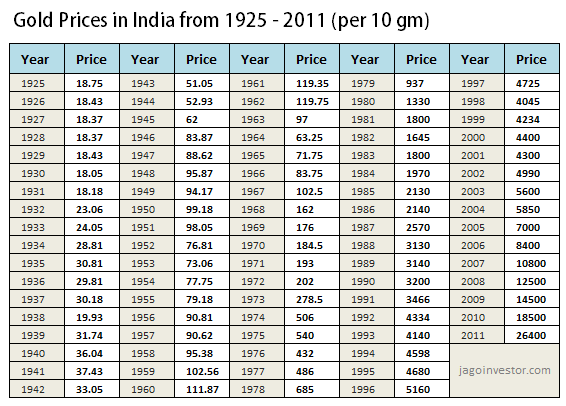BREAK-EVEN ANALYSIS: Break-even point, Determinants of BEP, Break-even chart, Assumptions, Advantages, cases . eBook : SEKHAR, CHANDRA : Amazon.in: Kindle Store
Contents
This can make computations difficult, and you’ll almost certainly have to fit them into one of the two. When it comes to collecting financing, break-even analysis is usually an important part of a company’s strategy. If you want to get funding for your firm or startup, you’ll almost certainly need to do a break-even study. Furthermore, a low break-even point will likely help you feel more at ease about taking on extra debt or funding. A demand-side study would provide a seller with a lot of information about their selling ability.
From stock and options trading to corporate planning for various initiatives, break-even analysis is widely utilized. Because the stocks are undervalued, the full amount of the loss cannot be recovered from the insurance company in the event of a fire. This book begins with the discussion of fundamental concepts of Break-even analysis.
- These costs change linearly or non-linearly with the decision variable, e.g. production level, workforce size, etc.
- In the above example, at level of output/sales of 25,000 units, there is a profit of Rs. 50,000 as indicated by the break-even charts under the three methods.
- The break – even represents the number of units that must be made and sold for income from sales to equal the cost of producing the product.
- This is variation of the first method in which variable cost line is drawn first and thereafter drawing the fixed cost line above the variable cost line.
The lines produced from the inter-section to Y-axis and X-axis may give sales value and the number of units produced at break-even point respectively. The angle which the sales line makes with total cost line while intersecting it at BEP is called angle of incidence. A large angle of incidence denotes a good profit position of a company. This line indicates that fixed expenses remain the same with any volume of production. The variable costs for different levels of activity are plotted over the fixed cost line at zero volume of production. This line can also be regarded as the total cost line because it starts from the point where fixed cost has been incurred and variable cost is zero.
Adding a brand new gross sales channel
The diagram clearly exhibits how a change in value or promoting value can impression the overall profitability of the enterprise. Graphical representation of cost and revenue data can be more easily understood by non-financial managers. Highlighting the breakeven point and the margin of safety gives managers some indication of the level of risk involved. The labour and resources used to create your final product are variable costs. Expenses like administrative work and overhead are examples of fixed costs.
Examples of fixed cost include rent, insurance premiums or loan payments. Variable costs are costs that change with the quantity of output. A break-even analysis is a useful tool for determining at what point your company, or a new product or service, will be profitable.

In a broader sense, it refers to a system of analysis that canbe used to determine probable profit at any level of activity. Thus, profit can be increased only upto a certain point and then it will decrease until it is converted into a loss. The break-even chart will then become curvilinear instead of linear. It might show more than one break-even point, one at a lower level of output and another at a higher level of output.
Must have tools for startups – Recommended by StartupTalky
Sales income and variable expenses do not grow in lockstep with the production value. They are less proportional than they should be at greater levels of output. This is due to trade discounts, bulk buying economies, concessions for bigger sales, and so on. It is assumed that variable costs are proportional to output volume. They move in correlation with production volume in practice, although not always in exact proportions.
A significant disadvantage of break-even analysis is considering the same price assumption for calculation purposes. The constant cost concept is irrelevant since as the company increases its production volume, economies of scale will lower the input cost. Thus, all businesses benefit by way of lower cost of purchase with increased volumes. Break-even analysis is the process of calculating and evaluating an entity’s margin of safety based on collected revenues and corresponding costs. To put it another way, the research demonstrates how many sales are required to cover the cost of doing business.

When you have a precise quantity and a timeframe in mind, it’s typically easier to decide on revenue goals. A break-even analysis is a financial method for evaluating when a business, a new service, or a product will become profitable. The absence of fixed expenses makes work cost comparisons difficult. A small margin of safety indicates that the profit will be small even if there is a small drop in output. It indicates the return obtained by selling the number of units produced. Usually, the angle of incidence and margin of safety are considered together to indicate the soundness of a business.
Some Limitations of Break-even analysis
One will be able to analyze and state if the new business idea is productive or not. Costs incurred in running a business that doesn’t vary with the volume of the production are known as a fixed cost. Also known as an overhead cost, examples of fixed costs are salaries, rent, premiums, loans, bills, etc. The analysis also assumes that the unit sales price remains the same.

Knowing what the break-even point for your business is will help you in deciding costs, allocating sales budgets and preparing business plans. Additionally, calculating the break-even point is critical in identifying critical sales drivers, whether it is volume of sales, average production cost or sales price. The basic idea behind doing a break-even analysis is to calculate the point at which revenues begin to exceed costs.
Significance of Break-Even Analysis
The variable costs are Rs. 13,50,000 for AB Ltd. and Rs. 20,00,000 for XY Ltd. Profits and losses at different levels of activity are plotted against corresponding sales and then these points are joined and extended. In case of more than one product, a separate profit line for each product should be drawn.
This book Break-even analysis aims to assist the reader to develop a thorough understanding of the concepts and theories underlying financial management in a systematic way. To accomplish this purpose, the recent thinking in the field of finance has been presented in a most simple, and precise manner. Process D has a minimum total cost, hence process D is most economical. Experience neither a profit nor a loss on the sale of its product.
The company can also restructure and optimize the costs to meet the higher production volume. It is incurred for selling or producing one additional product or unit. It includes the cost of raw material, packaging cost, sales commission, fuel and other costs that are directly related to the production. If you have a shop and want to start selling online, you may want to make sure that the sales would cover the expenses of creating, advertising and maintaining the website, for example.
This tool fails to take into account the demand-side scenario, since not all models produced are sold on the assumed value. If a business wants to calculate margin of security (Version #2) for variety of models offered, then as a substitute advantage of break even analysis of present sales level, selling worth per unit within the denominator. It can be extended to show how changes in fixed cost-variable cost relationships, in commodity prices, or in revenues, will affect profit levels and break-even points.
A factory ABC Enterprises produces a particular kind of good wherein the total fixed costs stands at Rs.50,000 and variable cost to produce a good is Rs.30. The company sold these goods with a sale price per unit of Rs.50. Break-even analysis is useful in studying the relation between the variable cost, fixed cost and revenue. Generally, a company with low fixed costs will have a low break-even point of sale.
The model does not function accurately for multi-product calculations as it assumes the relative proportion of each product produced and sold to be constant. The break-even analysis enables a comparative study of the critical elements of the cost of your company or business. More importantly, such analysis can help a company’s strategic planning for profits. Due to its emphasis on the Marginal Concept, the break-even analysis is an effective tool for planning and control. The study of break-even points emphasize the effects of additional sales on profits.
Information provided by the break-even chart is in a simple form and is clearly understandable even to a layman. Fixed expenses are to be divided into those that involve cash payments and those that do not involve cash payments, like depreciation. Margin of safety is the extent by which actual or projected sales can exceed the break-even sales. It represents the amount gained or lost which defines how far or near the break-even point is. Once you have successfully formulated your break-even point, you will have to apply the analysis on actionable tasks to achieve that point.
Break-even analysis calculates the number of units or revenue required to cover your company’s entire costs. You are neither losing or gaining money at the break-even point, but all of your business’s expenses will have been paid. The sales earned by your company after striking https://1investing.in/ even are pure profit. The break-even chart is very useful to the management for taking managerial decisions because the chart studies the relationship of cost, volume and profit at various levels of output. Under this method, fixed cost line is drawn parallel to the X- axis.
